
I like to play a 61 key keyboard stacked on an 88. Playing piano, electric piano, clav and whatever else on the 88, along with split keybass if I'm doing keybass. Then play various synth, organ or “orchestral” sounds on the 61. Will also commonly play synth layered with piano, controlled from the 88. Layers can be convenient in songs which need two fisted piano for the entire song. Play both hands on the 88, and on chorus or bridge use the footpedal to swell in layered strings or pads for enhanced dynamics.
I picked the Studiologic SL88 Studio for a gig rig 88. The keys are quite playable and the instrument is not expensive. The SL88 is relatively light-weight and has very nice MIDI master controller features, for setting up and playing multiple synthesizer parts with just a single program change from the SL88.
I also like the SL88 because it has a relatively sparse control panel. MIDI keyboards with sparse control panels have always been in the minority. In my opinion, the “most useful for stacking” have been flat-top keyboard designs with controls placed on a short angled panel slanting between the key backs and a slightly-raised flat top.
The majority of keyboards have numerous knobs, sliders and buttons on the top panel, which is great for synths on the top of a stack, or for musicians who only play a single keyboard. Such keyboards are near-impossible to operate unless you can easily see and touch the top-panel controls. When such instruments are on the bottom of a keyboard stack, one must mount stacked keyboards many inches above the bottom keyboard, so that the bottom keyboard controls can be viewed and adjusted.
It is quite possible to play a “tall stack” but not ergonomically ideal. It gets fatiguing to hold one's arms up in the air all night playing the top of a tall stack. Also, if one does a lot of switching between keyboards during a song, in order to simultaneously play several different musical parts-- It is faster to swap the hands between close-spaced keyboards. It is slower to swap hands on wide-spaced keyboards. There might be cases of swapping hands to “squeeze in an extra part” which are not feasible because swapping hands on a tall stack is too slow.
As said, the SL88 is better-configured than many for close-stacking, but a control-free flat top design would allow closer spacing without having to go to so much trouble. The “closest to ideal” modern 88's may be some of the Kawai stage pianos which have flat tops and controls on a tilted front panel. Those Kawai models are very nice but they are rather expensive and heavy for spot gigging.
The SL88 has a nice small bright easy-to-read display, a multi-function knob and three buttons. I just wish they could have figured out a better location than smack dab in the middle of the top panel. With a stacked keyboard mounted 2 inches above the SL88 top panel, the controls are easy enough for me to adjust, reaching in-between the two keyboards. But one would have to bend over and peer into the slot between the two keyboards in order to see the display, which is less than convenient. However the SL88 control location is “perfect” for non-stacked keyboards. Maybe nowadays few musicians wish to set up compact multi-keyboard stacks.

So I made a little periscope device in order to view the display with a stacked keyboard 2 inches above the SL88.
The following pictures look rough. In hand, the device has a nice looking smooth gloss black lacquer paint job. Raw pictures of the solid gloss-black are indistinct black blobs. In order to enhance detail I drastically boosted shadows and drastically cut midtone contrast. The photo processing magnifies every grain of dust and minor surface imperfection. The pictures look rough as a cob, black-on-black pictures boosted to enhance detail.
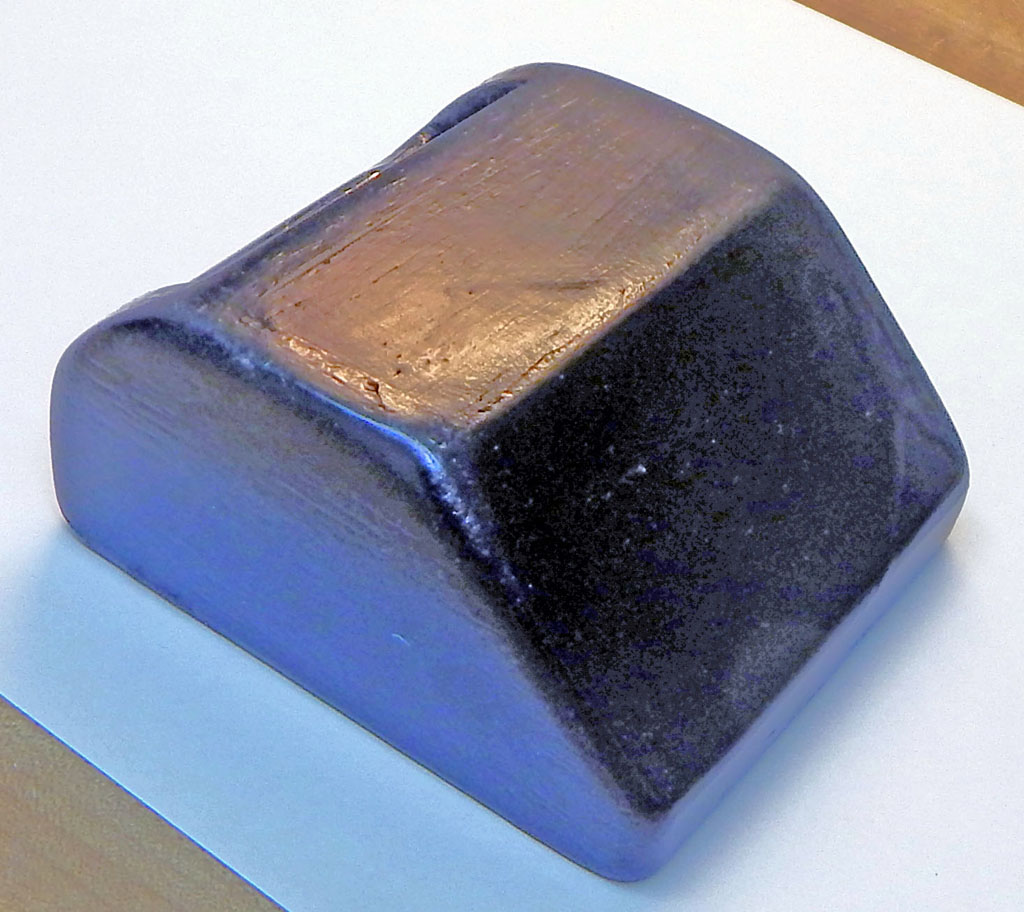
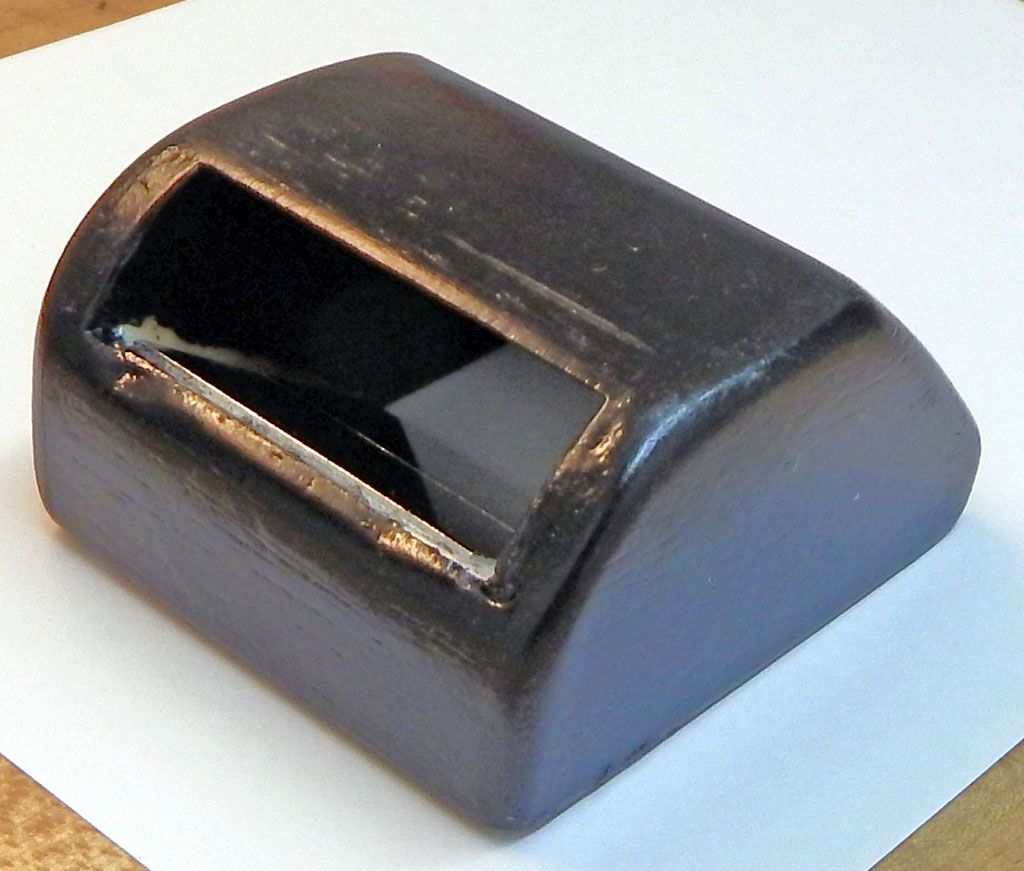
Two small 3.5 pound pull neodymium magnets are embedded in the bottom of the SL88 periscope, which are adequate to keep the device in-place during use, attracted to the SL88 steel top panel.
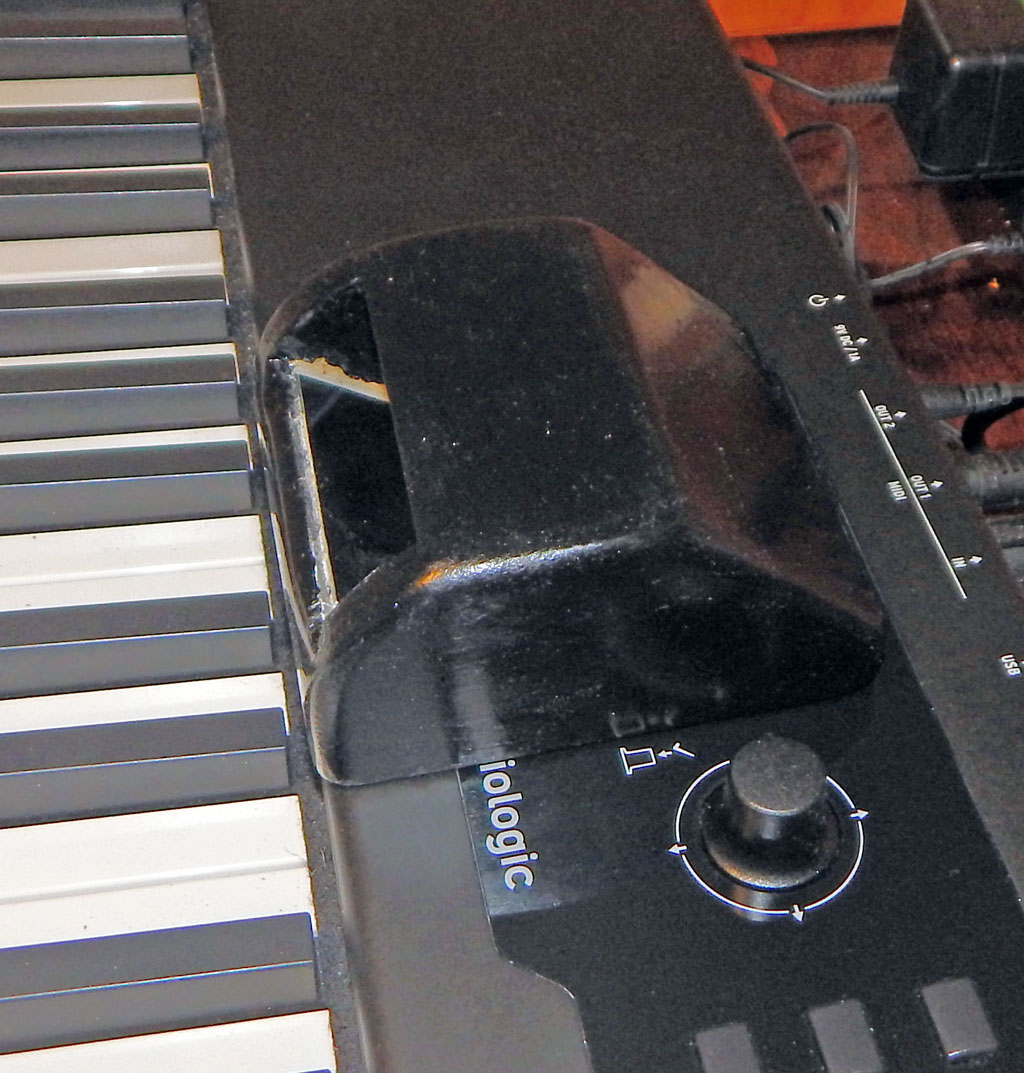

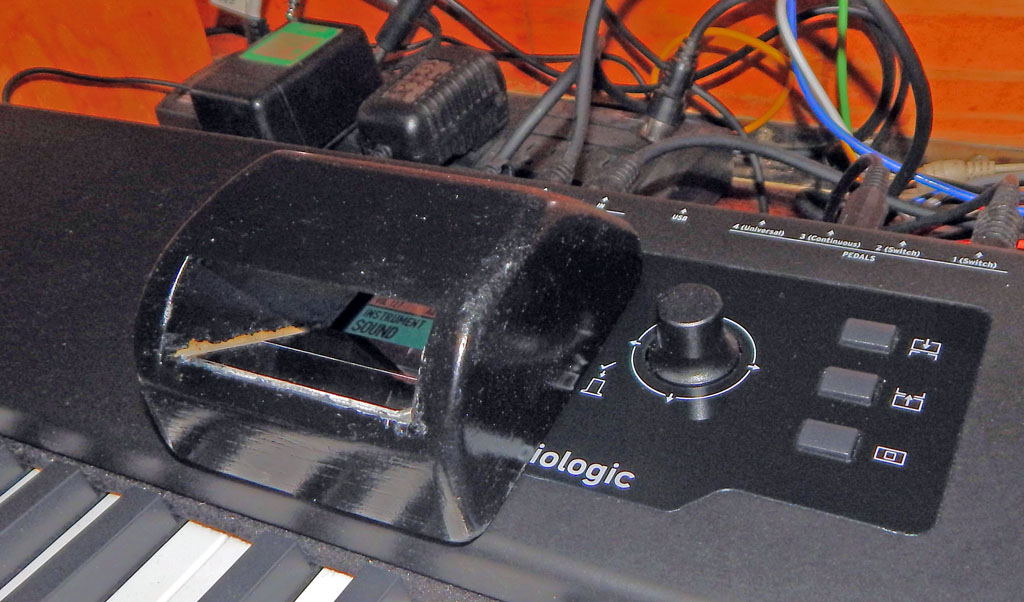

Here it is with the stacked keyboard. When seated playing the stack, one has a slight angle-view in-between the keyboards, but one has to bend down rather far to peek between them and see the SL88 display. The SL88 periscope moves the display image forward, shining out from under the front lip of the top keyboard.

This optical spacing is at best “rather tight”. The best I could manage in this configuration is to clearly see the top half of the SL88 display, looking down when playing, without bending or stooping out of the normal playing posture. During performance, the top half is the only part necessary-- To see which controller patch is selected.
However, the angles are such that I can see the bottom half of the display by retaining my playing posture but leaning forward a couple of inches. That is easy enough to do, so that editing SL88 patches are not excessively annoying via the periscope. While scrolling thru edit screens, I just need to rock back and forth a bit to see all parts of the screen.
In order to periscope a full view of the entire display without moving one's head, the periscope would either have to extend out over the SL88 keys, or the FA06 would have to be slid farther back, widening the keyboard spacing. I would rather put up with a slightly restricted view than either of those two “cures”.
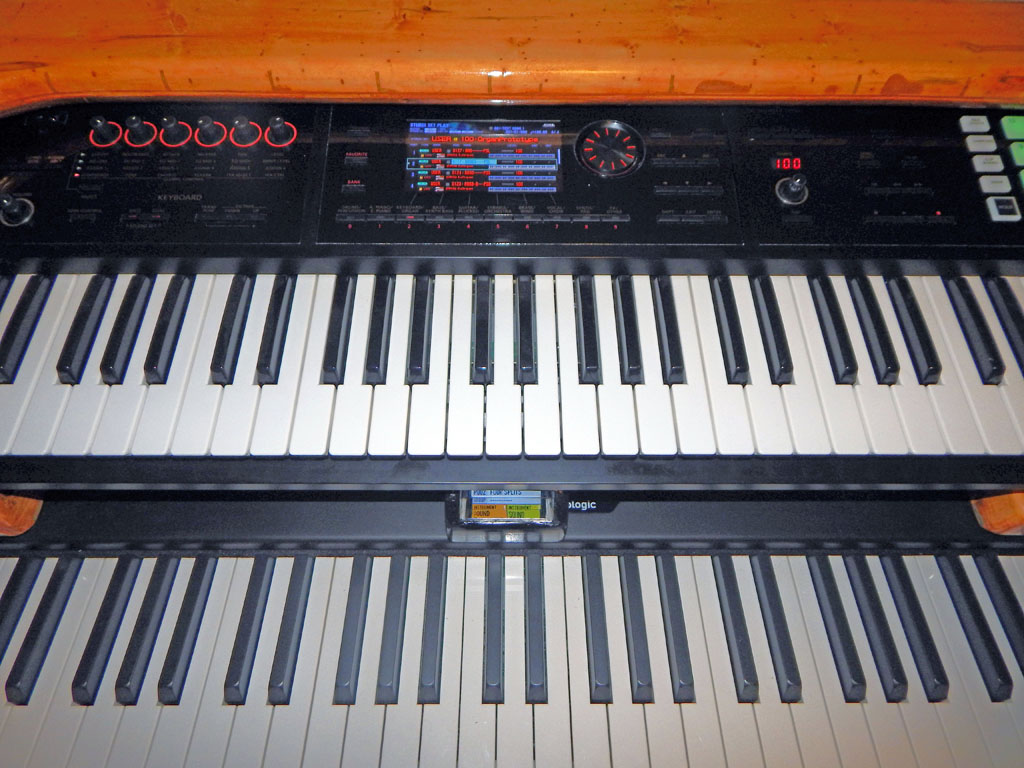
I made a couple of mirrors the proper dimensions and then experimentally discovered case angles and dimensions by building a temp prototype out of cardboard and painters tape. After the mirror angles and dimensions of the cardboard periscope were “as good as it was gonna get”, I measured the prototype and made this crude final assembly diagram.

The periscope is 3.75 inches front-to-back, 1.875 inches tall and 2.75 inches wide. It was assembled out of quarter inch plywood scraps. Two side panels were cut with the illustrated profile, and then two smaller panels glued to the inside, making the support angles for mirror mounting. Then assorted little bits of quarter inch plywood were cut for the other outside surfaces.
I didn't have on-hand big-enough good quality first-surface mirrors. The surplusshed.com website sells nice-enough not expensive first-surface optical-quality mirrors. So far I have been too lazy to order mirrors. Maybe eventually I will order some to replace the current mirrors, if I get annoyed enough by the current makeshift mirrors.
Because I didn't know how well this would work, I wanted to build the thang “free” out of materials on-hand. I had some 3.5” hard drive platters removed from dead hard drives. Hard drives are good to cannibalize before discard, to get nice magnets and bearings and such. The platters of at least the older 3.5” drives are tough aluminum-magnesium alloy with a beautiful mirror-finish nickel (and some say trace platinum) plating. I have read that some modern platters, especially in 2.5” drives, are glass rather than plated aluminum. Glass ought to be at least equally reflective, but glass is likely rather difficult to precisely cut, and more breakable than aluminum.
The platters have a very smooth mirror finish, though a “slightly darker” reflection than a quality optical mirror. In this application the slightly reduced reflectivity has not so far been annoying.
I needed two mirrors about 2.25” wide and about 2” tall. The biggest continuous strip I could cut out of a 3.5” hard drive platter was 2.25” X 1”. The platters have holes in the middle, so you can get two 2.25” X 1” pieces out of a platter. So I cut 6 such strips then picked the 4 best out of the batch. To keep the mirror pieces “as flat possible” with each other, I cut two pieces of eighth-inch aluminum plate, 2.5” X 2”. The extruded aluminum is relatively flat and rigid in that size. At least compared to plywood for instance. I sanded the aluminum plates a bit to make them “a little smoother” than the raw material.
I attached two of the hard drive platter strips side-by-side to each aluminum plate, forming the front and back periscope mirrors. The hard drive platter strips were affixed to the aluminum plates with double-sided carpet tape. The butt-joined platter strips turned out “fairly optically flat” across the seams. There is a visible line between the two platter strips but that does not make the mirrors unreadable. In addition to being “free and in-stock at the house”, these metal mirrors will not shatter if the periscope is dropped.
This works good enough for a working prototype. Later on if I get annoyed with hard drive platter mirrors, I can order decent first-surface mirrors. I could easily remove the hard drive platter strips and mount better mirrors to the same aluminum plates in the same periscope assembly.
Forward to Roland KC-500 Keyboard Amp Upgrade
Back to Folding Hardwood Keyboard Stand Overview